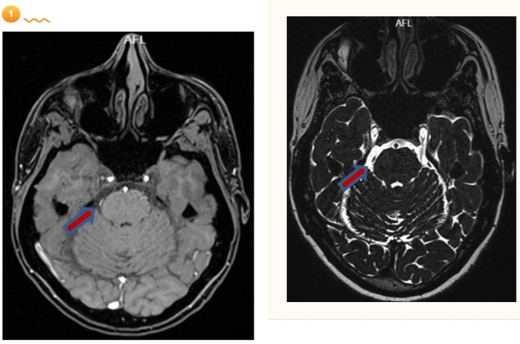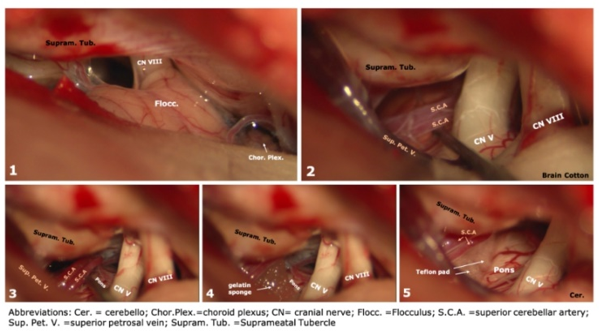14 years pain was solved in Shanghai. A European Lady is Treated for Trigeminal Neuralgia at the 4th Hospital of Shanghai
Note: the real story happened in the last month of 2024. And the patient agreed to report her case on media.
For many patients, the difficulty in seeking medical treatment is akin to a chronic social issue, resistant to resolution. However, this perspective changes when we encounter the story of a young European woman, S Lady, who seeks treatment for trigeminal neuralgia at the Fourth People's Hospital of Shanghai, affiliated with Tongji University.
S Lady has suffered from trigeminal neuralgia, a condition often described as "the most intense pain a human can endure," for the past 14 years. This pain, which affects the distribution areas of the trigeminal nerve in the head and face, has made her daily life a nightmare, severely affecting her quality of life. Despite extensive efforts in Europe, including multiple CT and MRI scans, she received no definitive diagnosis. Her journey included a series of misdiagnoses and treatments that did little to alleviate her pain, such as the extraction of several teeth and the prescription of ineffective painkillers that only brought her additional side effects.


In August 2024, S Lady, accompanied by her Chinese husband, arrived at the Fourth People's Hospital of Shanghai, hoping for a miracle. The moment she stepped into the hospital, the warm and professional reception from the triage nurse provided a glimmer of hope. The triage nurse meticulously inquired about her symptoms and promptly arranged various tests, directing her to the dental department. There, the doctor quickly ruled out dental issues and suggested further evaluations in the cardiology department. Once again, the cardiologists found no heart problems and referred her to the neurology department. The neurologists performed a specialized MRI scan of her trigeminal nerve, which revealed a significant issue: a small artery compressing her right trigeminal nerve root. This was likely the root cause of her long-term pain.
The neurologists explained the situation in detail, giving S Lady a renewed sense of hope. They recommended her to Dr. Zhang Haitao, the deputy chief physician in the neurosurgery department, for further assessment and treatment. Dr. Zhang Haitao warmly welcomed S Lady, thoroughly reviewed her medical history, and prescribed low-dose carbamazepine to observe its effectiveness. Within a week, S Lady noticed a significant reduction in her pain, although she still experienced some side effects like dizziness and nausea. Based on her response to the medication and the MRI results, Dr. Zhang Haitao diagnosed her with bilateral primary trigeminal neuralgia. Given the severity and duration of her condition, along with the noticeable side effects of the medication, he recommended surgical intervention.
Three months later, on the eve of Christmas 2024, S Lady and her husband returned to Shanghai, placing their trust once again in the neurosurgery team at the hospital. Under the guidance of Dr. Zhang Zhiwen, the head of the neurosurgery department, and with the support of the entire medical team, S Lady underwent a microvascular decompression surgery on her right trigeminal nerve. The surgery was meticulously performed under a microscope and assisted by a robotic navigation system, ensuring precise and safe intervention. The team used a Teflon fleece to separate the offending artery from the trigeminal nerve, effectively relieving the compression.
The Christmas Eve before her surgery, Nurse Manager Ji Wenjing, learning of S Lady’s cultural background, arranged a warm and festive celebration with the medical staff, making her feel at home. After the surgery, S Lady’s pain on the right side of her face immediately disappeared upon regaining consciousness. While she experienced mild headaches for the first two days post-surgery, she gradually recovered and was discharged a week later, pain-free and with a well-healed incision.

Dr. Zhang Haitao emphasized that trigeminal neuralgia is characterized by sudden, intense pain in specific areas of the face, such as the lips, nostrils, gums, and tongue. These sensitive areas are known as trigger points, and simple daily actions can trigger severe pain. The exact mechanism of primary trigeminal neuralgia remains unclear, but research indicates that the demyelination of the trigeminal nerve at the brainstem is a primary cause, often resulting from the compression of fine blood vessels in this region. Microvascular decompression surgery, which involves separating the compressing vessel from the nerve and inserting insulating material, is the most effective and preferred method for treating primary trigeminal neuralgia.
S Lady’s journey not only highlights the efficiency and expertise of the Chinese medical system but also underscores the importance of multidisciplinary collaboration (MDT) in providing comprehensive and accurate diagnoses. Her trust in the neurosurgery team at the Fourth People's Hospital of Shanghai ultimately led her to a life free from pain, reigniting her hope for a brighter future.

